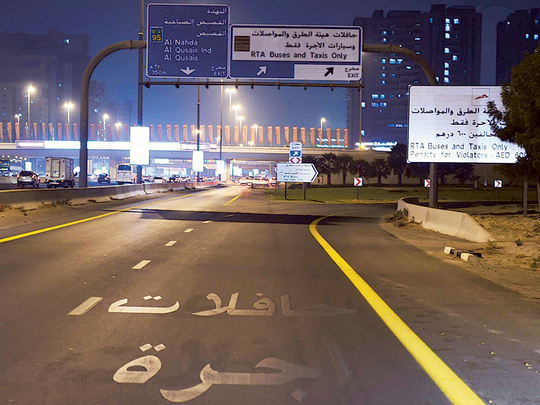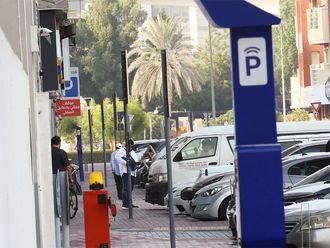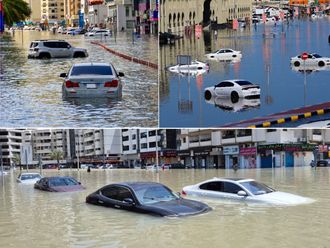
Dubai: Dedicated bus and taxi lanes in Al Ghubaiba and Al Mamzar will be monitored by cameras from the end of this month, following its success in reducing violations on Naif road.
Dubai has seven kilometres of bus and taxi priority lanes spread across different parts of the city.
Last year, the Roads and Transport Authority (RTA) installed APNR or automatic number plate recognition cameras on a dedicated bus lane on Naif Road, which helped reduce violations by 88 per cent.
RTA has announced that motorists in Al Ghubaiba and Al Mamzar will be given a grace period till the end of October in order to make them get used to the new monitoring system, which means there will be no fines until October 30.
However, from October 31 there will a fine of Dh600 for every violation of the dedicated lanes.
The cameras identify two categories of vehicles, one is white-listed and the other is black-listed.
According to RTA, the white-listed ones are RTA buses, taxis, ambulances, Civil Defence and police vehicles, which are allowed to use the dedicated bus lanes, while all private vehicles are black-listed and will be penalised upon use of the dedicated lanes.
Motorists are allowed a grace distance of 20 metres for exit and entry from side roads, parking as well as drop off areas.
Abdullah Yousuf Al Ali, CEO of RTA’s Public Transport Agency, said that the offences are reported either automatically through the cameras, or manually through Dubai Police patrols. If the motorist is fined twice (automatically and manually) for the same offence, only one fine will be collected.
The monitoring system has helped improve the speed of RTA buses by 20 per cent, while the dedicated bus lanes also help reduce traffic congestion and operation costs.
Interestingly, RTA is also working to develop a plan to dedicate more lanes for buses and taxi.
“The implementation plan will commence by the end of this year and will extend for two years that will target the high congested areas in Deira and Bur Dubai districts,” Al Ali said.
He said that bus lanes are an effective means to reduce congestion in busy areas and promote use of public transport.
“Bus lanes are one of the effective measures to relieve congestion in most developed cities. In Dubai, the implemented bus lanes have had a high impact on ease of flow of the public buses and taxis in Central Business District (CBD),” he added.
He said that bus lanes are a key solution to enhance public transport operation.
“Giving priority to public buses through dedicated lanes saves the journey duration considerably, which also results in saving resources,” he explained.
Currently, Dubai has dedicated bus lanes at several locations, in addition to signal priority at Al Ghubaiba bus station.
RTA introduced six kilometres of dedicated bus lanes in Dubai in 2010 on sections of Al Mankhool Street, Al Khaleej Street, Khalid Bin Al Waleed Street and Al Ghubaiba Street.
In 2011, the project covered a section of Naif Street and parts of Ittihad Street in the direction from Sharjah to Dubai near Al Nahda Interchange.











